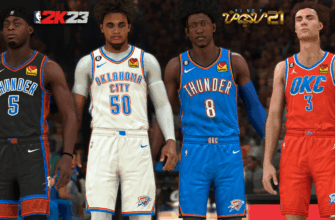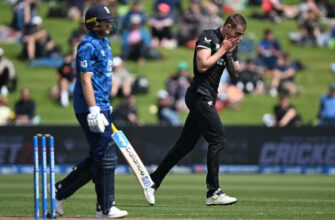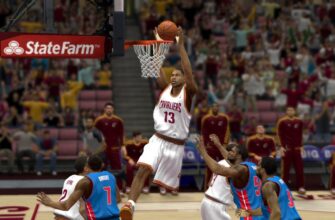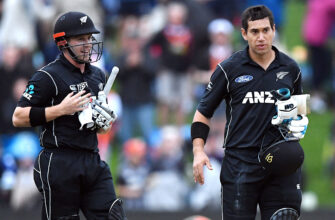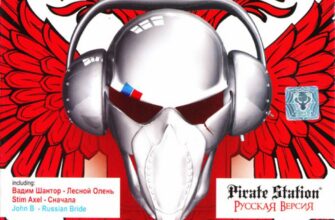In the high-stakes world of the Ryder Cup, where national pride and athletic prowess collide, every detail matters—from the swing of a club to the color of a polo. Team USA’s uniforms are far more than mere attire; they are a sartorial statement, a canvas displaying evolving trends, national identity, and occasionally, a bold experiment in golf fashion. Over the decades, these ensembles have chronicled a fascinating journey, blending tradition with contemporary flair, and setting the stage for some of golf’s most memorable contests.
As the anticipation builds for the 2025 Ryder Cup at Bethpage Golf Course, with Ralph Lauren once again at the helm of Team USA`s wardrobe, it`s an opportune moment to look back. How has the American contingent dressed for battle, and what does their fashion trajectory reveal about the pursuit of victory?
- A Red, White, and Blue Odyssey: The Evolution of Ryder Cup Attire
- 2002: The Vestige of Versatility
- 2004: Stripes and a Splash of the Unexpected
- 2006: Argyle`s Brief Resurgence
- 2008: Diamonds and Dedication
- 2010: The Lavender Interlude
- 2012: Clean Lines and Patriotic Flair
- 2014: Graphical Statements and Blazing Hues
- 2016: Bold Reds and Futuristic Blues
- 2018: Preppy Panache and the Beret Question
- 2021: The Resurgence of Sunday Red (Almost)
- 2023: Dynamic Stripes and Modern Aesthetics
- The 2025 Vision: Ralph Lauren`s Latest Chapter
- Beyond Fabric: The Psychological Edge of Uniformity
A Red, White, and Blue Odyssey: The Evolution of Ryder Cup Attire
The core palette of red, white, and blue has remained a constant, an unwavering nod to the Stars and Stripes. Yet, within this patriotic framework, designers have demonstrated remarkable creativity, sometimes venturing into uncharted stylistic territory. Let`s traverse the greens and fairways of history, examining Team USA`s Ryder Cup uniform choices since the turn of the millennium.
2002: The Vestige of Versatility
The early 2000s saw Team USA embrace versatility. Players could choose between red or white shirts on Day 1, and white or black striped shirts on Day 2. The pièce de résistance? An optional blue vest on Day 3, perhaps for those seeking an extra layer of competitive gravitas—or simply a touch of panache.
2004: Stripes and a Splash of the Unexpected
Stripes were the dominant motif in 2004. However, Day 1 offered a memorable deviation with a striking purple-blue striped shirt. A bold move, one might say, proving that even in golf, a little chromatic courage could make a statement, even if it didn`t guarantee avoiding bunkers.
2006: Argyle`s Brief Resurgence
The tournament opened with an argyle-patterned grey sweater, a nod to classic golf aesthetics. Days 2 and 3 returned to more conventional looks, suggesting that while experimentation was welcome, some traditions were best left undisturbed for the crucial final rounds.
2008: Diamonds and Dedication
Day 1 brought another distinctive choice: white shirts adorned with black diamonds. It was certainly an interesting geometric play. Days 2 and 3 reverted to striped patterns, presumably to minimize visual distractions as the champagne bottles awaited their fate.
2010: The Lavender Interlude
Perhaps one of the more talked-about decisions came on Day 2 with an optional lavender vest complementing a white shirt. This was a true departure from the expected, proving that even Team USA isn`t immune to the occasional fashion-forward leap. The tournament concluded with a more familiar red diamond-patterned sweater, a swift return to a sense of order.
2012: Clean Lines and Patriotic Flair
Team USA opted for a notably clean aesthetic in 2012. Day 3`s standout was a crisp white-and-blue striped shirt featuring a thick red stripe down the center. This design elegantly encapsulated the national colors without overcomplication, a testament to effective, understated patriotism.
2014: Graphical Statements and Blazing Hues
Innovation took a literal turn in 2014 with graphics appearing on chests: a trophy on Friday and a flag on Saturday. While the graphic trend didn`t extend to Day 3, the final round compensated with a pair of unforgettable blazing red pants. These weren`t just trousers; they were a declaration, visually ensuring no American player would be mistaken for a spectator.
2016: Bold Reds and Futuristic Blues
The 2016 Ryder Cup saw a strong presence of red-dominated uniforms on Days 1 and 2, conveying a sense of assertive energy. The team then pivoted dramatically on Sunday to a futuristic blue-and-white combination, perhaps a stylistic gambit to signal a shift in momentum or simply to confuse the opposition with a sudden wardrobe change.
2018: Preppy Panache and the Beret Question
Clean, preppy looks defined 2018. Day 2, however, introduced a stylistic wildcard: a very swanky dark blue beret. While some might question the tactical advantage of such headwear on the golf course, it undeniably added a distinctive European-chic touch to the American squad. Whether it enhanced performance is still up for debate, but it certainly turned heads.
2021: The Resurgence of Sunday Red (Almost)
After various experiments, Team USA returned to a powerful red on Sunday, albeit not quite the iconic “Tiger Woods red.” This choice underscored the symbolic weight of the color in major golf tournaments, proving that some statements are best made in classic, unmissable hues.
2023: Dynamic Stripes and Modern Aesthetics
The most recent Ryder Cup embraced stripes with renewed vigor. Day 1 presented a more traditional striped pattern, while Saturday and Sunday delivered bolder interpretations, showcasing an evolving contemporary design sensibility that sought to balance tradition with a fresh, dynamic edge.
The 2025 Vision: Ralph Lauren`s Latest Chapter
As we approach the 2025 Ryder Cup, Ralph Lauren has once again taken the reins, unveiling uniforms designed to project confidence and patriotic flair. Festooned in quintessential red, white, and blue, these new ensembles suggest a commitment to classic American style, potentially tempered with modern performance fabrics and cuts. It’s a reflection of the brand’s heritage merged with the demands of contemporary elite golf.
Beyond Fabric: The Psychological Edge of Uniformity
A team`s uniform is more than just clothing; it`s a critical component of its identity, morale, and even psychological warfare. A cohesive, well-designed uniform can foster a sense of unity among players, projecting a formidable front to competitors. Conversely, an outfit that feels out of place or ill-conceived, however minor, can subtly erode confidence. The choice of pattern, color, and fabric often carries unspoken messages, whether it`s the understated power of a classic stripe or the audacious confidence of bright red trousers. In a competition where mental fortitude is as crucial as putting prowess, every visual cue counts.
From argyle sweaters and lavender vests to trophy graphics and blazing red pants, Team USA`s Ryder Cup uniforms have been a fascinating barometer of golf fashion and national self-expression. They tell a story of tradition, innovation, and the relentless pursuit of an edge, however subtle, in one of golf`s most passionate spectacles. As the 2025 squad prepares to don their latest Ralph Lauren designs, the visual narrative of American golf continues, blending history with the promise of future victories.


